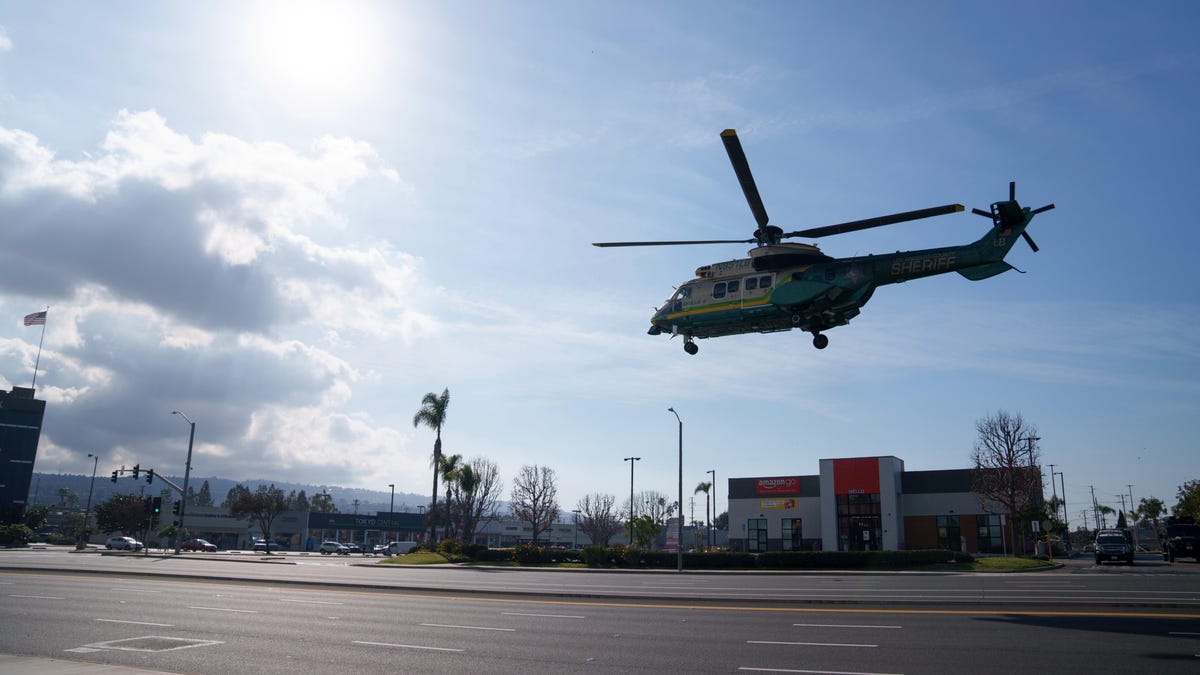As a kid, I distinctly remember sitting in the back of my family’s 1996 Dodge Grand Caravan and seeing “speed limit enforced by aircraft” signs on the side of the road. I never knew how this actually worked, so I always imagined Snoopy flying a biplane and gunning down speeding cars, but the reality is a lot less exciting, and it’s incredibly inefficient and ineffective.
Helicopters are the most commonly used airborne vehicle used to monitor road speeds, though sometimes small fixed-wing planes are used. Regardless of what type of airborne vehicle is used, it needs a group of at least two officers, one pilot and one spotter who monitors a pre-measured stretch of roadway and uses a special stopwatch to clock when a vehicle enters and exits the stretch to determine who’s driving too fast. When the spotter catches a vehicle speeding, they radio to a stationed patrol car who pulls over the speeding car. The aircraft usually stay between 12,000 and 15,000-feet elevation so road users often can’t tell when they’re being monitored.
The frequency of aerial patrol has dwindled in recent years due to the rise of Lidar. But if you manage to get a speeding ticket due to aerial enforcement, you can still fight it in court like you would any other ticket, and both the officer who clocked you from the sky and the one who pulled you over on the ground have to be present for it to count. . In a 2016 KQED interview with Jim Andrews, a California Highway Patrol pilot, Andrews said,
“We don’t necessarily set up as many specific speed enforcement details as we did 10 or 15 years ago, predominantly because of the advent of Lidar,” said Andrews. (Lidar lets officers use lasers to pinpoint the speed of a vehicle.) “But there are still circumstances where we are definitely valuable, where traditional ground enforcement may not work.”
According to Andrews, another reason why the frequency of air patrol has fallen is that it was never cost-effective for helicopters to loiter over a section of freeway to catch speeders. It’s expensive to fuel and fly helicopters, not to mention the salary of the two officers inside the helicopter and the minimum of one officer on the ground to successfully exploit this patrolling tactic.
The practice of aerial speed enforcement originated in car-crazy California in the early 1980s, though California Highway Patrol began testing this procedure as early as the 1960s. While technological advancements have limited the need for aerial speed patrolling in some regions, it’s still thriving in other parts of the country. According to KTLA5,
An NBC affiliate in New York was told last year that the Empire State hadn’t conducted an aerial patrol since the 1990s, yet warning signs remained throughout the state.
On the flip side, the Akron Beacon Journal reported last year on investments in new technology, allowing the Ohio State Highway Patrol to expand aerial enforcement capabilities. So to a large degree, the risk of an airborne ticket depends on where you are driving.
Despite a decreased implementation of aerial speed enforcement, don’t think that you get a free pass to speed next time you see a “speed limit enforced by aircraft” sign. Other enforcement tactics may be in place. If you’re a kid Googling this from the back seat of your parents’ car, I’m sorry that real life is so much more boring than your colorful imagination. You will neither get gunned down by Snoopy in a biplane, nor will a helicopter land on the freeway to give your parents a ticket.







